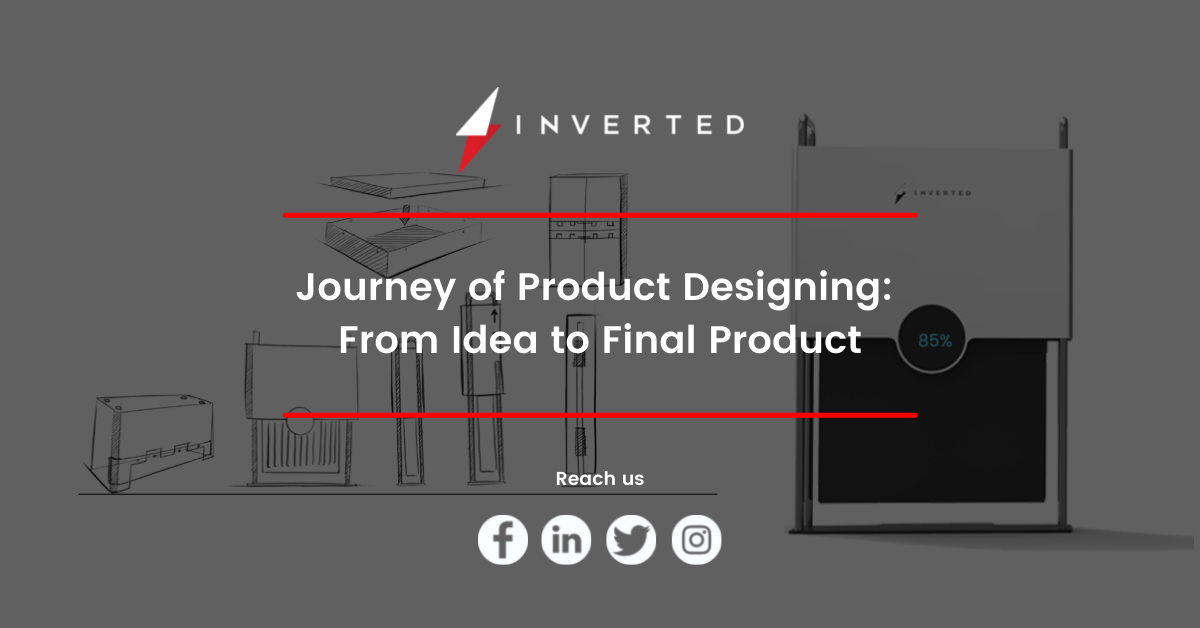
One of the most significant aspects of the industrial sector is product design.
As the global economy is growing, people are becoming increasingly sensitive to the aesthetics of products. Previously, mid-level consumers were solely concerned with functionalities, but now they are concerned with beauty and its appearance as well.
Now before understanding the design process, let’s first understand what is aesthetics.
Aesthetics is a fundamental design principle that determines how appealing a design is. Aesthetics encompasses visual elements such as balance, color, movement, pattern, scale, shape, and visual weight. Designers employ aesthetics to complement the utility of their designs, so enhancing functionality with appealing layouts.
Aesthetics is a manner of experience. It’s one of the ways we judge, feel, and “know” the world.
Now as we have a basic understanding of the aesthetics, so let’s move ahead and understand the product design process.
This entire product designing process is divided into 7 segments.
- Design Brief: This includes the basic design and the functionality
- Target Audience
- Primary Research
- Opportunity Areas: Here almost every time the design brief is updated
- Conceptualization of Product
- Prototyping and Testing
- Final Product
The beginning of any product design is always an idea. The idea can be of a product, or it can be a concept leading to solving a problem. The best thing about an idea is that it can appear at any moment, in any location, and any circumstance.
It’s very important to have an idea; it’s the start of an incredible adventure. Look for any startup or organization that has done well in your opinion, they all started with nothing more than an idea.
If we follow the words of Stan Lee, “If you have an idea that you genuinely think is good, don’t let some idiot talk you out of it.”
Design Brief:
Once you have an idea, the first step is to create a design brief. When I say design brief, I’m referring to the product’s functionalities as well as its aesthetics.
These are not the final functionalities. These features make up the product’s basic framework.
Target Audience:
Your idea might be aimed at a broad/generalized audience at first, but as you build the product, you’ll need to narrow it down to a specific audience. The importance of having a target audience cannot be overstated.
There are no limits when you’re marketing to a broad audience. However, by focusing on your target demographic, you are defining your limits. When it comes to product design, these boundaries are crucial.
Primary Research
Now that you’ve sketched out your design and identified your target audience, it’s time to conduct your research.
This is one of the most important tasks in the product designing process.
What is this primary research? Well, this research is a process of connecting with your audience and presenting your solution.
You have so far sketched the product’s functionalities, which you believe will answer a problem. However, in practice, the proper set of functionalities can only be determined by listening to your target audience’s comments and analyzing their feedback.
It is observed that almost every time after the primary research the product design is updated. This updated design is now the base design.
Opportunity Areas
When we talk about opportunity areas, we’re talking about creating a product that meets the needs of a specific group of people.
This is when your aesthetics and design skills come into play. You must research your target audience’s day-to-day activities. Their purchasing patterns, as well as their likes and dislikes. In a nutshell, you must conduct a psychological profile of your target audience and apply the results to aesthetics.
See, there can be multiple organizations with the same solution for the same community so the only way you can win the community is by offering them a product with which they can connect.
Conceptualization of Product
You now have all of the information you need to create a flawless product. When you compare the very first design brief you had with the newly gathered data, you’ll notice that it’s a completely different product, and this happens almost every time.
Now it’s time to think about the real product. This new product will feature all of the necessary functionalities as well as aesthetics that will appeal to the community.
Prototyping and Testing
Now it’s time for prototyping and testing the product in real-time. This will help you to overcome the real-time design barriers and maybe functionalities errors.
Prototyping and testing also help you to give your product a final touch.
After following all these steps, the final product is developed.
If you are missing any of the steps which are mentioned above then there is a good possibility that your product will not perform the way it should.


Leave A Comment